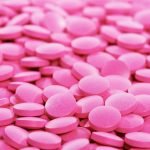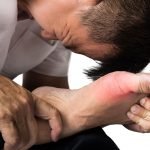Homeopathy in Oncological Care
Vis Medicatrix Naturae
Kalyan Gaddam, ND
Todd A. Born, ND
Cancer is the second leading cause of death in the United States.1 Conventional cancer treatment options – including chemotherapy, radiation, and surgery – are stressful and often result in the patient (and family) suffering both physically and emotionally, which negatively impacts quality of life. Chemotherapy and radiation, albeit possibly lifesaving or able to prolong the patient’s life, are known to cause many side-effects, including but not limited to oral mucositis, neuropathies, nausea, vomiting, skin eruptions, anxiety, depression, pain, and organ damage. Most treatments available for these side-effects are short-term and often ineffective.
Homeopathic medicines are widely used to treat side-effects of chemotherapy and radiation, without any known negative interactions. In a prospective, observational study conducted in Switzerland and Germany, the effectiveness and value of homeopathic medicine with conventional care was evaluated.2 The study found that patients treated with both homeopathy and conventional care experienced improved quality of life compared to the group that received only conventional care. Similarly, a randomized controlled trial of 285 cancer patients, who received homeopathic care along with standard conventional care, showed that the homeopathic treatment arm had a significantly better global health status and improved quality of life compared to the conventional-care-only arm.3 In this article, we present 17 case reports of patients that were treated with homeopathy for side-effects of conventional cancer care. We will attempt to show the quick results and efficacy of homeopathic medicines in even severe pathological conditions.
Case Studies
Patient 1
DB, a 63-year-old female with ovarian cancer, presented in September 2014 with symptoms of headache, sinusitis, pain at the root of her nose, and a viscid, post-nasal discharge. She was actively undergoing chemotherapy treatment at the time. Although she had a history of sinusitis, the headaches had worsened since starting chemotherapy. On examination, she had tenderness on palpation of her sinuses. She was advised to use Kali bichromicum 200C, every 4 hours for 2 days (each dose equals four #25-size pellets). Within a day she felt completely better, with neither headaches nor sinus symptoms. She repeated Kali bichromicum 200C as needed for sinusitis. There was no change in any of her medications during this treatment.
Nine months later she presented with symptoms of exhaustion, dizziness, and a dazed feeling a day after attending a mid-afternoon cancer fundraiser on a hot day. The day after this fundraiser, she felt exhausted, weak, and dizzy. She was immediately sent for a brain MRI and we started her on Glonoinum 200C. She was advised to take the remedy every 2 hours until the symptoms resolved. She felt much better by the end of the day, and completely better by the next day. She repeated the remedy for 2 days. She had no more fatigue, and her dizziness completely resolved. Unfortunately, the MRI revealed some questionable lesions. She was started on radiation to her brain. She maintained a very good quality of life during her radiation treatments. She used Glonoinum 200C as needed when she had dizzy spells. She is alive today and doing very well.
Patient 2
RW, a 57-year-old female with squamous cell carcinoma of the mandible, was referred by the radiation department for her radiation-induced oral mucositis. At the time of presentation she was unable to open her mouth or to chew any food. She was also unable to talk fluently. Physical examination was quite difficult, as she was unable to open her mouth without significant pain. She was initially started on Mercurius solubilis 200C, to be taken every 3 hours. She improved, but not significantly. She was then switched to Borax 200C, every 3 hours. She improved rapidly and within a week was almost completely better. She was able to talk fluently and could now open her mouth and eat food. Once the improvement began, she was advised to use Borax 200C only as needed. She had to use the remedy for 1 week, but thereafter used it only when the symptoms reappeared. She finished her radiation treatments and responded very well.
Patient 3
MS, a 50-year-old Hispanic female, presented in June 2015 for severe pain from a recently diagnosed breast cancer. At the time of her visit, she was waiting for surgical resection and further treatment plans from her oncologist. She was also very anxious (feeling the anxiety in the pit of her stomach) and was afraid of dying. She was initially started on Asteria rubens 30C, to be taken every 6 hours. Her pain improved significantly, but she still struggled with anxiety and fear of death. She was started on Agaricus muscarius 200C, 1 dose at night for 1 day. Both anxiety and pain improved rapidly and significantly. She was not under any treatment at this time, as she was still waiting for the surgical resection.
Patient 4
LH, a 50-year-old female, presented in July 2014 with anxiety and fear of dying. She noted that these symptoms started after being diagnosed with breast cancer in 1999. She also had colon polyps removed in 2011, which she was told were tubular adenoma with inflammation. Her anxiety increased. A small change in lab results or any bad news in her family would cause significant panic attacks, which made it very difficult to live her life. Her examination was unremarkable. She was started on Arsenicum album 1M, 1 dose at night for 1 day. She felt much better within 1 week. She was not under any treatment during his time.
Patient 5
JD, a 56-year-old male, presented in February 2015 for severe rectal pain and hemorrhoids secondary to radiation for a rectal cancer diagnosed the previous month. He had been started on radiation with 5-fluorouracil (5-FU). He described his pain as 10/10 while passing stool. He also had severe hemorrhoids, which caused additional discomfort. He was already taking hydrocodone-acetaminophen, with no significant benefit. External examination revealed significantly inflamed areas at the anus. He was started on Aloe 200C, to be taken every 3 hours. He reported no significant change after 1 week. He was then started on Aesculus 200C, every 2-3 hours. Although his pain improved by 30%, severe pain still interfered with his daily activities. He was started on Nitric acid 3C, every 2-3 hours. Within a few days, the pain had decreased by 80% and was well controlled. There was no change in his treatment during the intervention. Even with hydrocodone, Nitric acid 3C was the only intervention that helped control his pain. He was thrilled with the outcome. He continued with Nitric acid 3C during his radiation treatment period, and finished the treatment with a better quality of life.
Patient 6
DM, a 61-year-old male, presented in November 2015 with concerns of oral mucositis. He had been receiving cisplatin/5-FU along with radiation for squamous cell carcinoma of the left tonsil. As a result of these treatments, he had mouth sores and significant pain on swallowing (odynophagia). He was unable to consume food or liquids. He was started on fluconazole and “magic mouthwash” (a combination of prescriptive agents designed to ameliorate the side-effect of oral mucositis), which produced no benefit. On examination, his tongue had a thick white coating, and he had buccal ulcers and ulcerated gums. He was started on Borax 200C, to be taken every 2 hours, and told to decrease the frequency to 4 times daily once he noticed some improvement. Although his improvement was gradual, his mouth sores and pain were much better by end of the second week. He noted that the magic mouthwash would keep the pain away for 30 seconds, whereas the Borax 200C would keep the pain away for 30 minutes; this enabled him to eat much more easily. He continued his radiation treatment, and his pain and mouth sores were much better controlled.
Patient 7
TG, a 54-year-old female, presented in June 2015 with pain in her left upper extremity, secondary to lymphedema from mastectomy and radiation. She was on observation at the time. She reported that the pain radiated from the left medial axillary region to the elbow. The pain, which she rated as 8-9/10, prevented her from being able to move her arm. She could not afford a compression sleeve, and she was unwilling to do complete decongestive therapy because of family issues. On examination, limited range of motion of the left extremity was noted due to the pain. There was no significant difference in her arm measurements compared to the unaffected arm. She was started on Agaricus 200C, to be taken every 4 hours for 2 days. At her 2-week follow-up, she reported a significant improvement in pain control. By 4 weeks, her pain had completely resolved. There was no change in treatments during the treatment.
Patient 8
ES, a 50-year-old female with squamous cell carcinoma of the nose, presented with persistent nausea as a result of radiation treatments. She was on anti-nausea medication, without any benefit. She was started on Ipecac 200C, to be taken every 4-6 hours. Her nausea improved promptly. No medications were changed during her treatment.
Patient 9
MG, a 57-year-old female with colon cancer, presented for concerns with persistent nausea resulting from her FOLFIRI-based chemotherapy regimen (ie, folinic acid, 5-FU, and irinotecan). She had been on various anti-nausea medications, but with little benefit. She was started on Ipecac 200C, every 4 hours. She promptly improved. Unfortunately, her disease progressed and she was moved to hospice care. Her family was very grateful for the improvement of her nausea.
Patient 10
ME, a 45-year-old female with breast cancer, presented for symptoms of headache, a feeling of heaviness in the eyes, and severe photophobia over the prior 2 days. She was being treated with tamoxifen. She rated her head pain as 10/10. She felt extremely tired. Examination was unremarkable. She was started on Gelsemium 200C, to be taken every 4 hours for 1 day. She improved rapidly and completely recovered within 2 days. There were no changes in her treatment during this time.
Patient 11
TM, a 53-year-old female, presented with concerns of urinary incontinence and anxiety. She had been diagnosed with rectal cancer and treated with radiation, and was currently on observation. She would have an accident every time she exerted herself. The incontinence had started with a pregnancy, but was made worse by the radiation. She was started on Sepia 200C, to be dosed nightly. Two weeks later she reported a 90% improvement in the incontinence, and also noted decreased anxiety. She continued with Sepia 200C, 1 dose at night as needed. She later relocated for oncological care.
Patient 12
CN, a 76-year-old female, presented in October 2015 with migraine, moderate depression, and insomnia. She had been diagnosed with breast cancer in October 2014, and was taking letrozole, 2.5 mg/day. Since the diagnosis, her migraines, which usually occurred twice weekly, had been increasing, and the depression and insomnia had both developed. Examination was unremarkable. She was started on Natrum muriaticum 200C, 1 dose at night for 7 nights, followed by Natrum muriaticum 12X, 4 times daily. At the 4-week follow-up, she reported fewer migraines, less depression, and said she had been sleeping well. No medications were added or changed during this time.
Patient 13
GH, a 62-year-old male, presented with symptoms of stomach cramping, gas, and bloating. He reported “filling up with gas” no matter what he ate. He had been diagnosed with prostate cancer and was currently receiving radiation treatments. The pain was located to his epigastric region. Although he had a history of gastrointestinal issues, he reported that the pain was worse since starting radiation treatments. Examination revealed a bloated abdomen with diffuse tenderness on palpation over the entire abdomen. He was started on Carbo vegetabilis 200C, 3 doses, to be taken 3 hours apart. He reported by the end of the week that all GI symptoms had resolved and that he was doing well. There was no change in his medications during this time.
Patient 14
AS, a 55-year-old female with history of breast cancer, presented with pain in her arm secondary to lymphedema since mastectomy and radiation. She was still receiving radiation treatments. The pain, which was located on the medial surface of the arm, extended from her axilla to her elbow. She rated the pain as 10/10, and said it prevented her from being able to lift her arm or carry anything. Examination showed a decreased range of motion and an arm circumference that was greater than that of the unaffected arm. Due to family issues, she could not afford to complete decongestive therapy or to purchase a compression sleeve. She was started on Agaricus 200C, to be taken every 4 hours for 2 days. She noted prompt improvement in her pain within a few days. By 3 weeks later, she had no pain whatsoever and was doing very well.
Patient 15
MR, a 51-year-old female with spindle cell cancer of the thigh, presented with nausea as a result of radiation. She had undergone surgical resection and was still receiving radiation treatments to the midline of her thigh. She was started on Ipecac 200C, 1 dose during the office visit, and then to be taken every 4 hours. On follow-up, she reported that her nausea had promptly disappeared.
The following week she presented with a right-sided headache. She described the pain as throbbing, heavy, and radiating from occiput to forehead, especially around her right eye. She was started on Sanguinaria 200C, which immediately relieved the pain.
About 1 month later, the patient presented with severe pain at the site of radiation on her right thigh. She reported a pain level of 10/10. Examination revealed significant tenderness on palpation of the thigh, as well as heat radiating from the region. The affected area appeared mottled. She was started on Arnica 3C, to be taken every 2 hours until improvement was noticed. Within 3 weeks she had improved dramatically and was experiencing minimal pain.
Patient 16
BD, a 60-year-old female nurse, presented to the clinic in Dec 2015 with radiation-induced mucositis. She had been diagnosed with non-Hodgkin’s lymphoma (NHL) (first in 1982, then again in 1988) and later with squamous cell carcinoma (SCC) of the tongue (2000). She had received chemotherapy and radiation to her neck for the NHL; treatment for the SCC involved excision of the lesion on the right side of her tongue. In October 2010, the patient received vaccinations for foreign travel. She could not remember what they were. A day later, she thought she was having an allergic reaction, took a common OTC antihistamine, and went on her trip. During her travels she noticed that her mouth was very sore. When she returned, she was given fluconazole, but never recovered. Symptoms included soreness of the tongue and diffusely disseminated blisters. She was unable to open her mouth, talk, or chew food, and could not tolerate heat or cold in her mouth. She described the pain as 10/10. Eventually, she had a biopsy, which revealed significant inflammation and resulted in a diagnosis of lichenoid mucositis.
She had suffered with this for the previous 4 years, with no improvement. Examination revealed a thick white coating on the tongue. She had been taking fluconazole and using magic mouthwash for 3 weeks, with no significant change in her symptoms. Initially, she was started on Mercurius corrosivus 200C, to be taken every 3 hours for 2 days. The remedy did not help. She then tried Borax 200C, to be taken every 3 hours 3 days. This also produced no benefit. The inflammation and burning persisted. She rated the pain level as 10/10. She was then switched to Cantharis 200C, every 3 hours for 3 days. On follow-up 1 week later, the patient was in less pain and able to talk more easily. All of the mouth sores had healed, and the oral candidiasis had almost completely resolved. She had been on the same medication list for the prior 2-3 years, on and off. No medications were changed during this period. She was also on L-glutamine, 10 grams 3 times daily for 4 weeks; however, there were no considerable changes in her symptoms until she started Cantharis 200C.
Patient 17
AB, a 45-year-old female with squamous cell carcinoma of the tongue, presented in December 2015 with concerns of oral mucositis from ongoing radiation treatments. The mouth pain, which she rated as 10/10, made it impossible to open her mouth or speak easily. She also experienced odynophagia. Examination revealed a thick white coating of the tongue. She had been on fluconazole and magic mouthwash for 3 weeks, with no significant change in her symptoms. She was started on Borax 200C, to be taken every 3 hours until improvement was noticed, and then reduced to 3 times per day after that. One week later, she reported significant improvement in mouth sores and pain. On the third day of taking the Borax, her pain was 3/10, and she continued to improve throughout her radiation treatments. She was able to swallow and eat and to speak more fluently. One month into treatment, she still struggles with pain, but notes that the pain is 70% better. She continues to follow up and has been doing very well. Sometimes, in cases where radiation is still in progress, the patient may not yet be 100% pain-free.
Conclusion
In 17 separate cases, we have demonstrated the efficacy of homeopathy as an adjuvant to conventional oncological care. Homeopathic medicines are non-toxic, have no known negative interactions with conventional cancer care, and are inexpensive medicines with typically strong patient adherence. Several published clinical trials have examined the effectiveness of homeopathic adjuvants in cancer care.4,5 All the patients described in this article had no change in their medications during their care, with 1 exception; that patient is currently in hospice as of this writing. All of the other patients have continued to follow up and have maintained a good quality of life.
References:
- Centers for Disease Control and Prevention. Leading Causes of Death. Last reviewed March 17, 2017. CDC Web site. http://www.cdc.gov/nchs/fastats/leading-causes-of-death.htm. Accessed February 25, 2015.
- Rostock M, Naumann J, Guethlin C, et al. Classical homeopathy in the treatment of cancer patients—a prospective observational study of two independent cohorts. BMC Cancer. 2011;11:19. doi: 10.1186/1471-2407-11-19.
- Frass M, Friehs H, Thallinger C, et al. Influence of adjunctive classical homeopathy on global health status and subjective well-being in cancer patients—a pragmatic randomized controlled trial. Complement Ther Med. 2015;23(3):309-317.
- Oberbaum M, Yaniv I, Ben-Gal Y, et al. A randomized, controlled clinical trial of the homeopathic medication TRAUMEEL S in the treatment of chemotherapy-induced stomatitis in children undergoing stem cell transplantation. Cancer. 2001;92(3):684-690.
- Pommier P, Gomez F, Sunyach MP, et al. Phase III randomized trial of Calendula officinalis compared with trolamine for the prevention of acute dermatitis during irradiation for breast cancer. J Clin Oncol. 2004;22(8):1447-1453.
 Kalyan Gaddam, ND, practices at the Comprehensive Blood & Cancer Center and Salus Integrative Medicine clinic in CA. He graduated from Bastyr University. Besides his naturopathic degree, Dr Gaddam holds a Bachelor of Homeopathic Medicine and Surgery (BHMS) from India. Modalities include homeopathy, botanical medicine, IM/IV nutrition, Ayurvedic medicine, a wide range of physical medicine techniques, and therapeutic nutritional therapies. Specialties also include mind/body support through meditation, biofeedback, breathing exercises, and yoga. Dr Gaddam is the principle investigator for a clinical trial evaluating the effect of a mixture of amino acids, MCTs, and Withania somnifera on cachexia in cancer patients.
Kalyan Gaddam, ND, practices at the Comprehensive Blood & Cancer Center and Salus Integrative Medicine clinic in CA. He graduated from Bastyr University. Besides his naturopathic degree, Dr Gaddam holds a Bachelor of Homeopathic Medicine and Surgery (BHMS) from India. Modalities include homeopathy, botanical medicine, IM/IV nutrition, Ayurvedic medicine, a wide range of physical medicine techniques, and therapeutic nutritional therapies. Specialties also include mind/body support through meditation, biofeedback, breathing exercises, and yoga. Dr Gaddam is the principle investigator for a clinical trial evaluating the effect of a mixture of amino acids, MCTs, and Withania somnifera on cachexia in cancer patients.
***
 Todd A. Born, ND, is a naturopathic doctor, co-owner, and medical director of Born Naturopathic Associates, Inc, in Alameda, CA. He is also Product Manager, Scientific Advisor, and Editor-in-Chief of the Focus Newsletter at Allergy Research Group. He is a thought leader for a free, UK-based, peer-to-peer service for clinicians. Dr Born graduated from Bastyr University and completed his residency at the Bastyr Center for Natural Health and its 13 teaching clinics, with rotations at Seattle-area hospitals. Using a wide range of therapeutic modalities, Dr Born utilizes integrative medicine to treat chronic disease. Strong interests include difficult cases, GI issues, neurological disorders, endocrinology, CVD, diabetes, autoimmune disease, developmental and behavioral issues, HIV/AIDS, and geriatrics.
Todd A. Born, ND, is a naturopathic doctor, co-owner, and medical director of Born Naturopathic Associates, Inc, in Alameda, CA. He is also Product Manager, Scientific Advisor, and Editor-in-Chief of the Focus Newsletter at Allergy Research Group. He is a thought leader for a free, UK-based, peer-to-peer service for clinicians. Dr Born graduated from Bastyr University and completed his residency at the Bastyr Center for Natural Health and its 13 teaching clinics, with rotations at Seattle-area hospitals. Using a wide range of therapeutic modalities, Dr Born utilizes integrative medicine to treat chronic disease. Strong interests include difficult cases, GI issues, neurological disorders, endocrinology, CVD, diabetes, autoimmune disease, developmental and behavioral issues, HIV/AIDS, and geriatrics.










